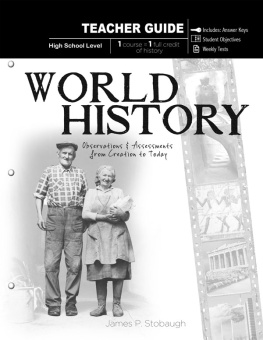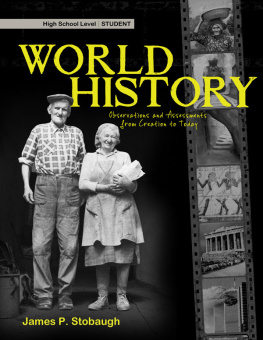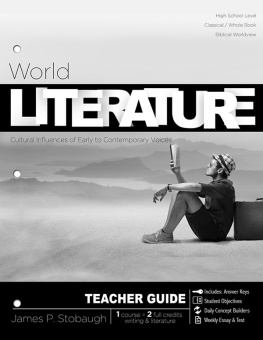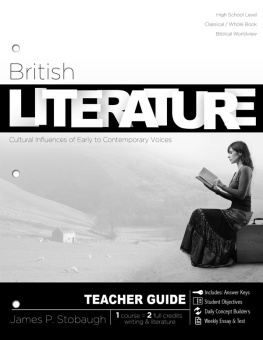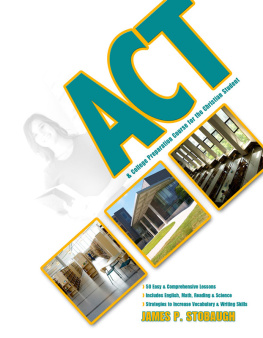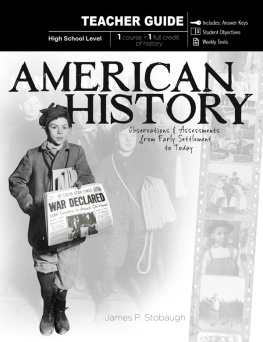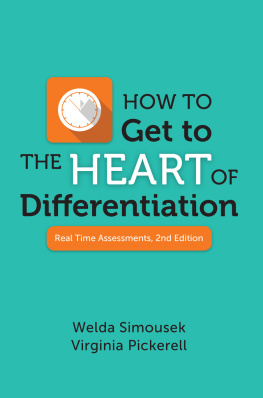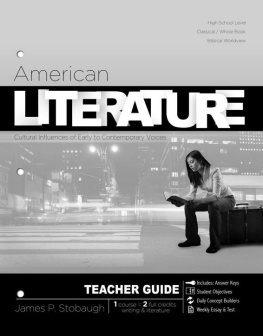
First printing: March 2012
Copyright 2012 by James P. Stobaugh. All rights reserved. No part of this book may be used or reproduced in any manner whatsoever without written permission of the publisher, except in the case of brief quotations in articles and reviews. For information write:
Master Books, P.O. Box 726, Green Forest, AR 72638
Master Books is a division of the New Leaf Publishing Group, Inc.
ISBN-13: 978-0-89051-647-8
Cover design by Diana Bogardus.
Interior design by Terry White.
Unless otherwise noted all images are from shutterstock.com, Library of Congress (LOC-image), and Wikimedia Commons. All images used under the Creative Commons Attribution-Share Alike 3.0 Unported license (CC-BY-SA-3.0) are noted; license details available at creativecommons.org/licenses/by-sa/3.0/.
Scripture quotations taken from The Holy Bible, New International Version, Copyright 1973, 1978, 1984, 2011 by Biblica, Inc. TM Used by permission of Zondervan, All rights reserved worldwide.
Please consider requesting that a copy of this volume be purchased by your local library system.
Printed in the United States of America
Please visit our website for other great titles:
www.masterbooks.net
For information regarding author interviews, please contact the publicity department at (870) 438-5288

This book is dedicated to this new generation of young believers whose fervor and dedication to the purposes of the Lord shall yet bring a great revival. Stand tall, young people, and serve our Lord with alacrity and courage!
How TO USE Your Teacher Guide
How this course has been developed:
- Teacher: this allows one to study the student objectives with each chapter, providing the answers to the assignments and the weekly exam.
- Chapters: this course has 34 chapters (representing 34 weeks of study).
- Lessons: each chapter has 5 lessons each, taking approximately 20 to 30 minutes each. There will be a short reading followed by critical thinking questions. Some questions require a specific answer from the text where others are more open-ended, leading the student to think outside the box.
- Weekly exams: the final lesson of the week is the exam covering the weeks chapter. Students are not to use their text to answer these questions unless otherwise directed.
- Student responsibility: Responsibility to complete this course is on the student. Students are to complete the readings every day, handing their responses to a parent or teacher for evaluation. Independence is strongly encouraged in this course designed for the student to practice independent learning.
- Grading: A parent or teacher can grade assignments daily or weekly, and keep track of this in their files. Assignments with answers are available at the end of each chapter.
Throughout this book you will find the following components:
- Narrative Background: background on the period.
- Critical Thinking Questions: questions based roughly on Blooms Taxonomy.
- Concepts/Generalizations: terms, concepts, and theories to be learned.
- History Maker: a person(s) who clearly changed the course of history.
- Historiographies or Historical Debate: an examination of historical theories surrounding a period or topic.
- World View Formation: An overview of historical understandings of who God is. There is also a subsection where we examine important thinkers of the period/topic.
- History & World View Overview: an overview of world views.
What the student will need:
- Notepad: for writing assignments.
- Pen/pencil: for the answers and essays.
- Weekly Exams: available at the back of teacher guide or as a free download at:
nlpg.com/worldhistoryexam.
About the Author

James P. Stobaugh and his wife, Karen, have homeschooled their four children since 1985. They have a growing ministry, For Such a Time As This Ministries, committed to challenging this generation to change its world for Christ.
Dr. Stobaugh is an ordained pastor, a certified secondary teacher, and an SAT coach. His academic credentials include: BA, cum laude Vanderbilt University; Teacher Certification, Peabody College for Teachers; MA, Rutgers University; MDiv, Princeton Theological Seminary; Merrill Fellow, Harvard University; DMin Gordon Conwell Seminary.
Dr. Stobaugh has written articles for magazines: Leadership , Presbyterian Survey , Princeton Spire , Ministries Today , and Pulpit Digest . Dr. Stobaughs books include the SAT Preparation Course for the Christian Student, the ACT Preparation Course for the Christian Student, as well as American History, British History, and World History high school curriculum .
Contents
Preface
History is meant to be a light that illuminates the present and directs attention toward the possibilities of the future. However, history is only ancient, dusty chronicles if one does not honestly study and asses these written records of events, as well as the events themselves. History is a social sciencea branch of knowledge that uses specific methods and tools to achieve its goals.
Historians examine archival footprints. Some of these are written records: diaries, letters, oral histories, recordings, inscriptions, biographies, and many others. At times history seems merely to be a list of kings, of wars, and of other significant things. As a result, it can seem like only the study of a bunch of dead people. Who cares? Like Huck Finn, we quip, After supper the widow Douglas got out her book and learned me about Moses and the bulrushes, and I was in a sweat to find out all about him; but by and by she let it out that Moses had been dead a considerable long time; so then I didnt care no more about him, because I dont take no stock in dead people (Twain, Mark. The Adventures of Huckleberry Finn).
But history is alive, and full of interesting, glorious, and useful things! And it is terribly relevant to all of us.
There are lots of different histories. The Earth, the world of nature, and the universe all have pasts, but they have no histories, per se. Histories have to do with real, alive (or once alive) people. Only human societies have histories, based on collective memories from which they reconstruct their pasts.
Not all attempts to reconstruct the past have resulted in histories. My Uncle George (not a real uncle but just a family friend), grand wizard of the Ku Klux Klan, had an entirely different view of African history than I, a father of three African-American children. Uncle George had a delusional history that was very much like a Nazi propaganda film, but it was not a history. It was a past made up of venal images, obscured remembrances, and visceral prejudices that stewed in his poor, conflicted mind.
My history was big enough to love Uncle Georgemay he rest in peaceand I did, as did my three children. And in my life, we were brought together into an eternal peace. Perhaps that is the best thing one can say about world history; it brings everyone together in one shared history.
To be a true history, an account of the past must not only retell what happened but must also relate events and people to each other. It must inquire into causes and effects. It must try to discern falsehood in the old records, such as attempts of historical figures to make them look better than they really were. It must also present the evidence on which its findings are based.

